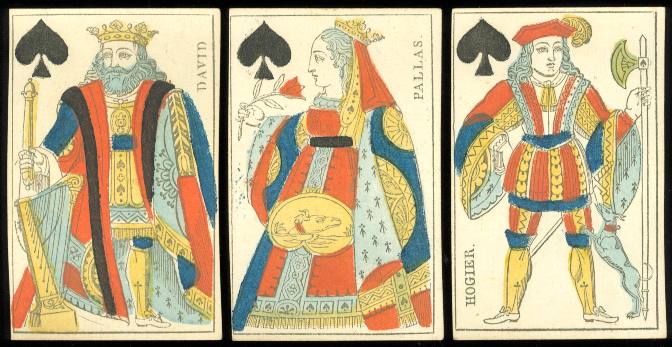
November 2010
Each weekend of the month was spend at a flea market or collectors meeting or a collectors fair. The latter was the largest collectors fair in the Netherlands and it always brings us some good finds. The collectors meeting brought us a good number of new decks too, so it was a difficult choice again this month.
After we had made a shortlist for this xpo, we were surprised by the mailman with two Ebay packages from the US. The first one arrived on November 29 and the second one on November 30. Both made us change our choice for this month's deck and joker and this caused a slight delay for this xpo and the update of this month, because they caused a renewed discussion here. One of the decks that didn't make it was the Renaissance deck by C.L. Wüst, but we've decided to show that in the "Old School" xpo. The Hamm's "bear" deck didn't make it either, but will be shown in the "International Pattern & its Anomalies" xpo next month. So what's here this month? Well, it's our oldest find this month and as it's a standard pattern, it was chosen because of its age only.
The deck of 52 cards has the single image French pattern on the courts. One of the characteristics of the pattern is that the cards have names. The Kings are named after ancient rulers. The names of the Queens are known from the bible or mythology, except for Argine. The most accepted explanation for this name is that it is an anagram for Regina (Latin for Queen). The names of the Jacks all refer to knights. Interesting to see is that the names of the kings and queens are on the top side of the card and only those of the Jacks on the bottom. But there's more to be told about this pattern.


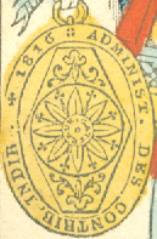 |
The single image pattern was designed in 1813 by Nicolas Marie Gatteaux, a French sculptor and engraver. His name can be found in the center of the shield on the Jack of Clubs (see image on the right). His designs were based on earlier versions of the Parisian pattern and they became the official French pattern in 1813. In 1827 Gatteaux designed a double imaged pattern and this was the official French pattern until 1945. Until that year it was forbidden to make changes to the pattern. So the older variations of this pattern were not made in France, but by manufacturers from other countries. After 1945 French manufacturers were allowed to make changes to the pattern too. |
|
|
In the French pattern the shield of the Jack of Clubs is used to mention the applicable tax law for playing cards. Here the date of 1816 is printed. The next French tax law is dated 1827. So that makes dating this deck easy. |
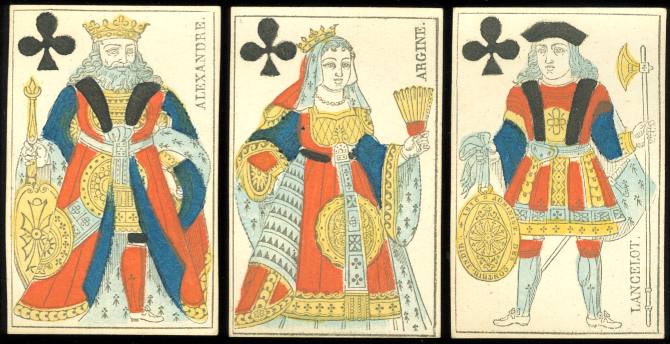
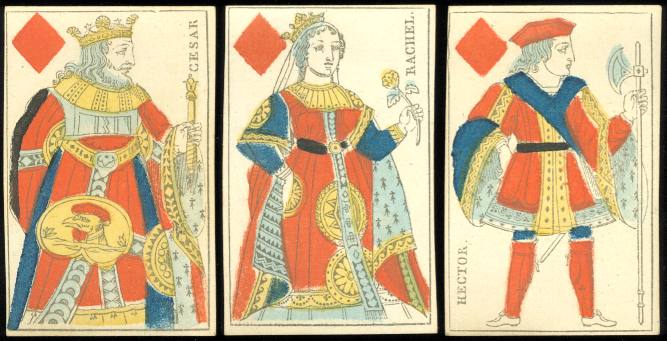
The courts were printed by woodblock, but with relatively fine detail in clothing and faces. They were coloured by hand, with the use of stencils. The woodblock printing was also done on the Ace of Clubs, in the French pattern always embellished with a wreath of laurels. The other cards were only stencil coloured. The cards were cut by hand too and that results in slight differences in size and un-straight cutting.
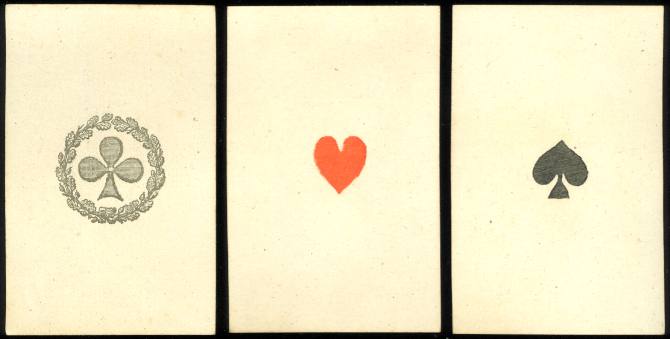
Older French decks may have a single coloured back. In the later decks from the second half of the 19th century usually the colours blue, pink can be found or a plain white back is used. Here we find an unusual yellow back. But the nicest thing about this find was that the deck doesn't seem to have been used. It's in almost pristine condition!
